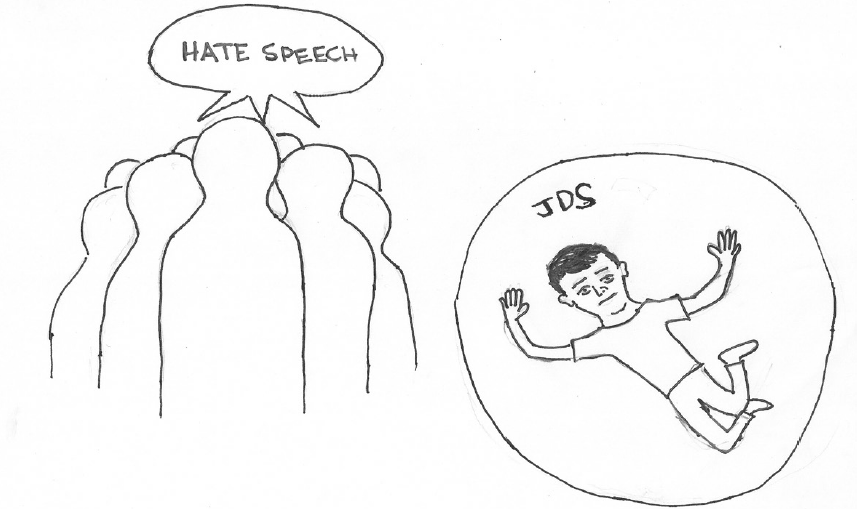How to fight anti-Semitism 101
January 20, 2017
In light of a recent rise in hate crimes in our community, CESJDS hosted a panel of local leaders including Montgomery County Executive Ike Leggett and Chief of Police Tom Manger. They discussed what various groups are doing in response to the anti-Semitic events and how we should react if confronted with hate.
As Jews, we have been subjected to anti-Semitic, hateful sentiments and actions throughout our religion’s history. Recently, swastikas, the symbol that represents the group of people who carried out the murders of over 6 million Jews, have reappeared in vandalism throughout our community.
In October, swastikas were spray-painted at Burning Tree Elementary School in Bethesda, where a Jewish congregation holds weekly services. Other recent incidents include swastikas being spray-painted on Quince Orchard High School in North Potomac and on a Jewish family’s house in Silver Spring.
The fact that the Washington, D.C. area has a strong Jewish community (217,000 Jews as of 2012) can make it difficult to see the frighteningly large presence of anti-Semitism elsewhere. According to the Anti-Defamation League (ADL), over 1 billion adults in the world “harbor anti-Semitic feelings,” approximately 24 million of whom live in America.
While we are taught about the history of anti-Semitism at JDS, we are never directly taught how to personally combat it. Aside from the occasional discussion on current events in the Contemporary American Jewish Society class, there is no set curriculum whose purpose is to educate us about combating modern anti-Semitism. Learning how to deal with anti-Semitism should be an element of our, and every, Jewish education.
Even without an exclusive course, there are still opportunities for students to learn from speakers and programs hosted by the school or by certain teachers and clubs. Additionally, outside resources like the ADL, whose website has a section dedicated to education and outreach, should be consulted. Because of the lack of attention devoted toward fighting anti-Semitism, it is imperative for students to seize the opportunity to learn about how to respond to anti-Semitic sentiments. These same sentiments are ones we will undoubtedly encounter as we grow older and experience more of the world.
We will come into contact with many of these forms of anti-Semitism as soon as we go to college. After examining over 100 public and private colleges and universities from January through June of 2016, the anti-Semitism watchdog group AMCHA Initiative found that 287 anti-Semitic incidents occurred at 64 colleges across the country. This was nearly a 45 percent increase from the 198 occurrences in the same time period the previous year.
During the panel, Leggett said that it is nearly impossible to change the opinion of someone who is being hateful in the heat of the moment. Rather, he believes we should try to educate those around us so that they can in turn educate those around them — this butterfly effect will, slowly but surely, spark a change. It is crucial that we, as young Jewish members of a world that is often very negative towards Jews, be educated on anti-Semitism so that we can educate those around us at school, home, college and wherever else our lives take us. We need to have the ability to be proactive and spark the change.







